











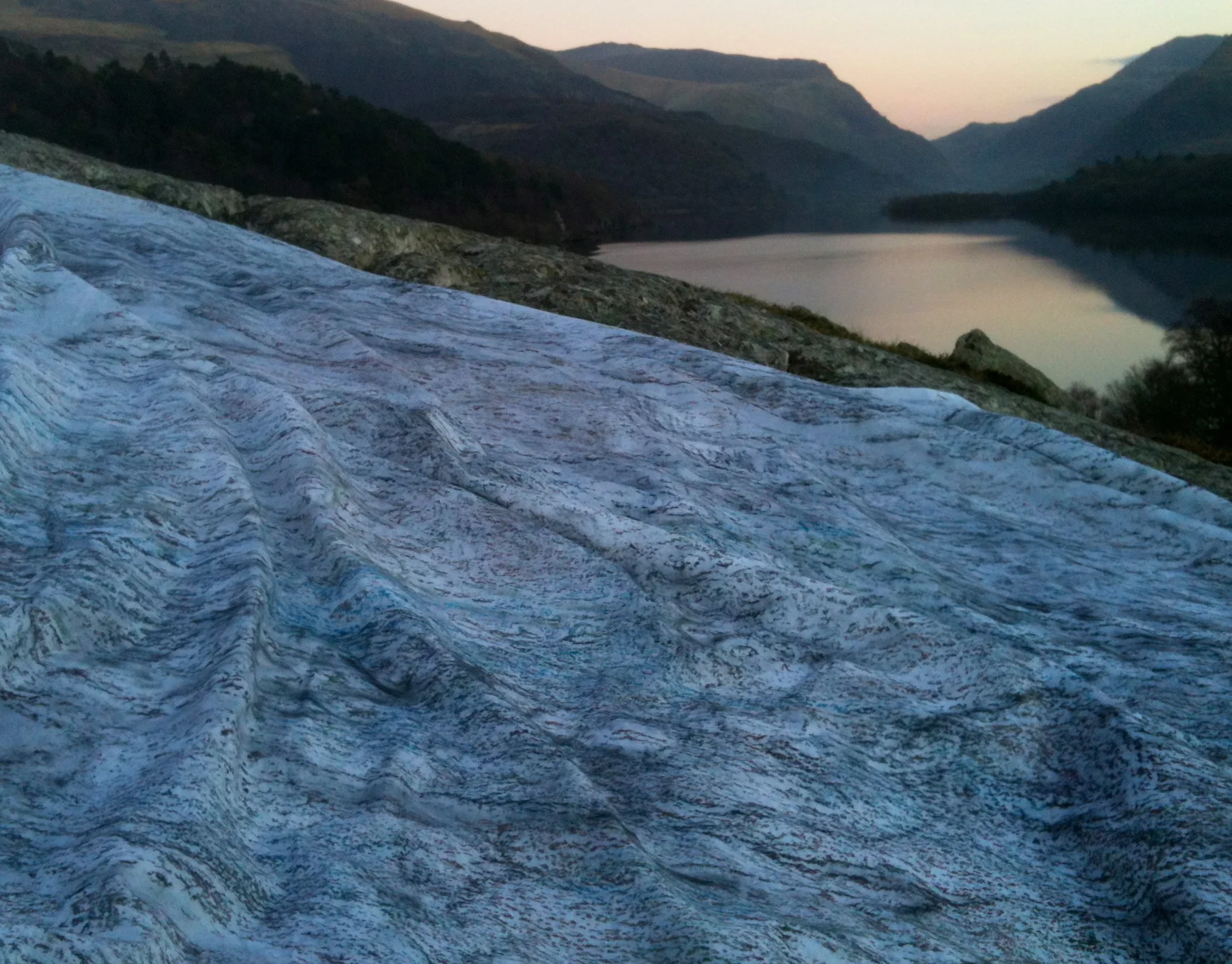


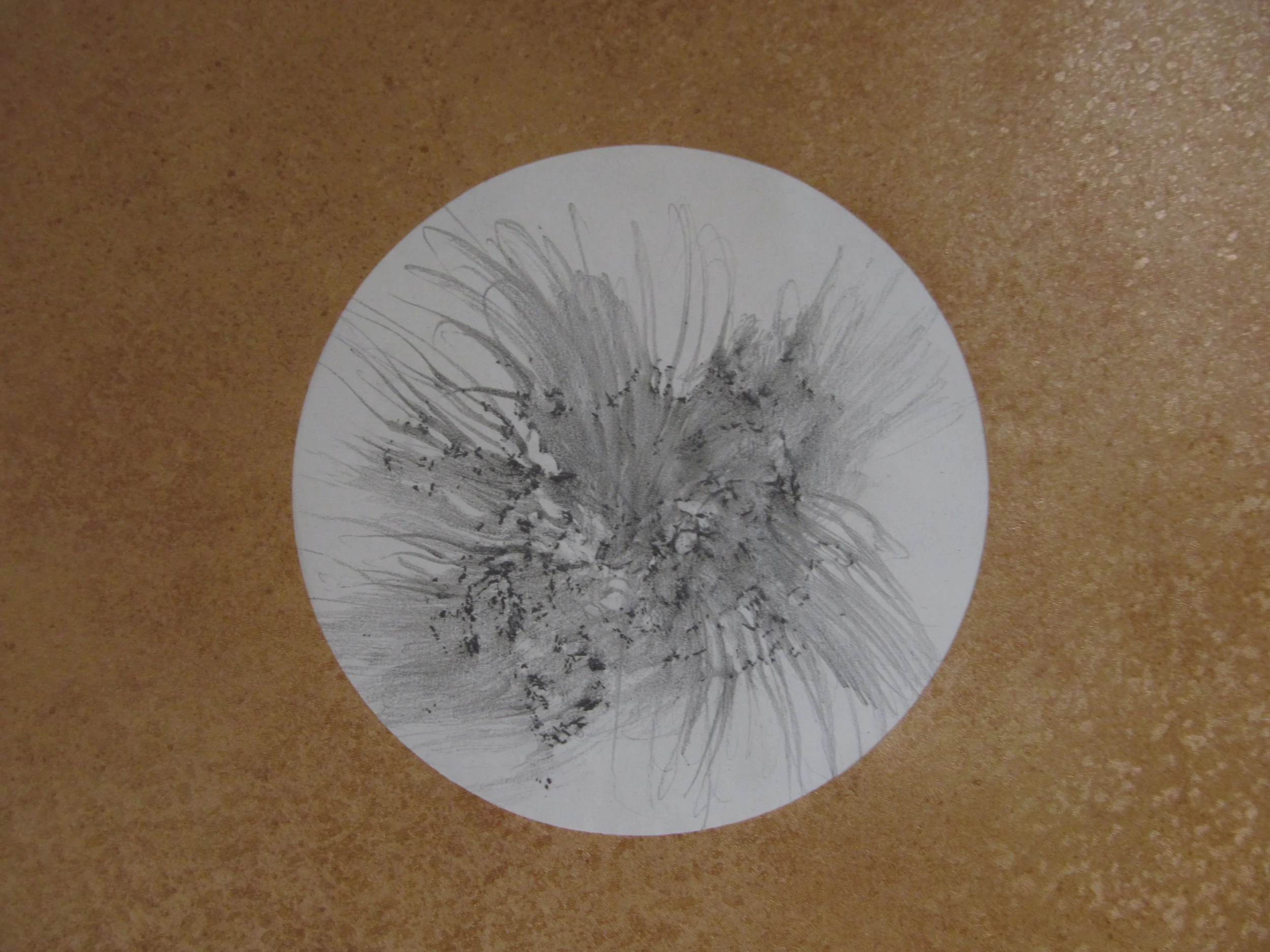
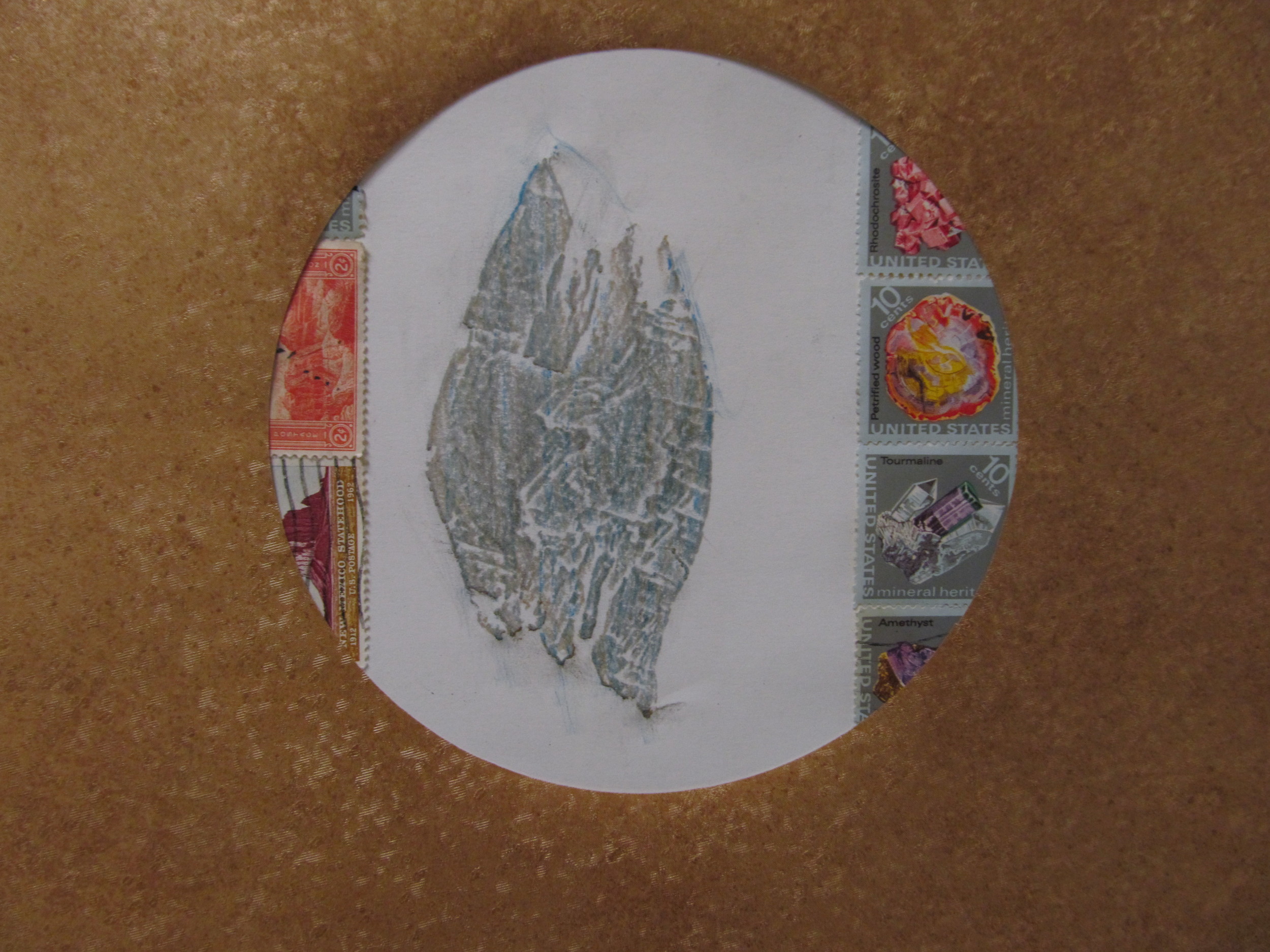
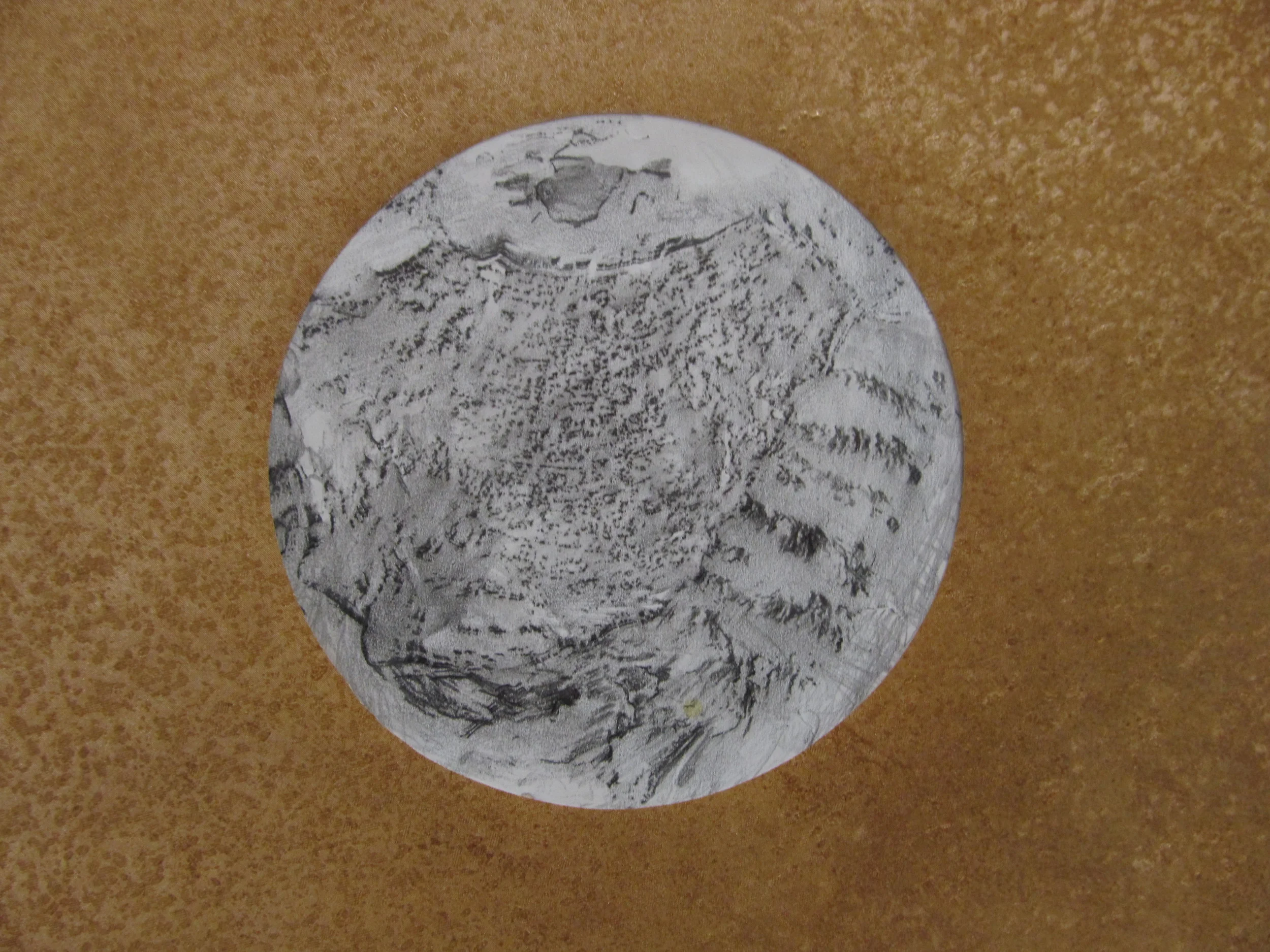
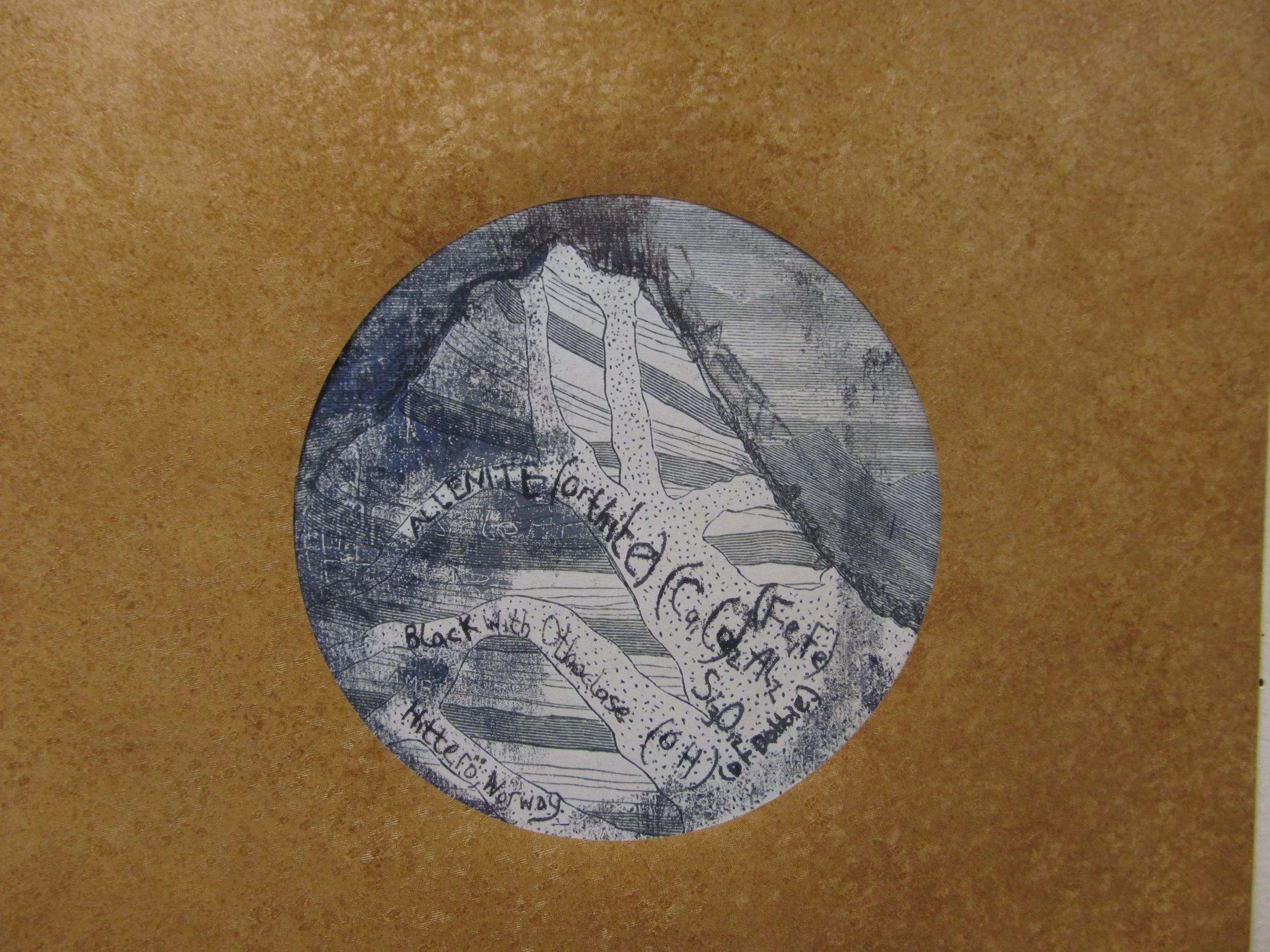
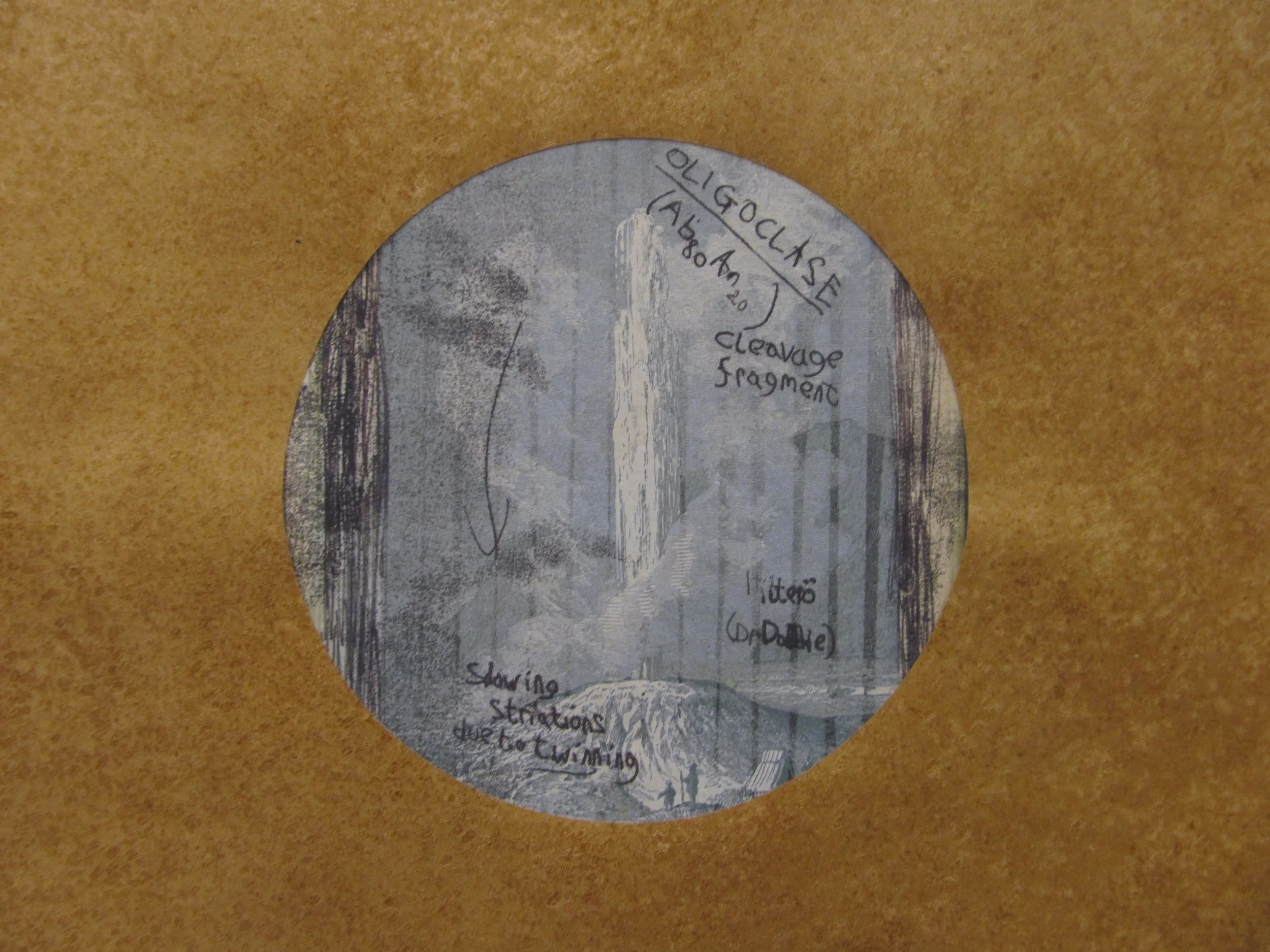

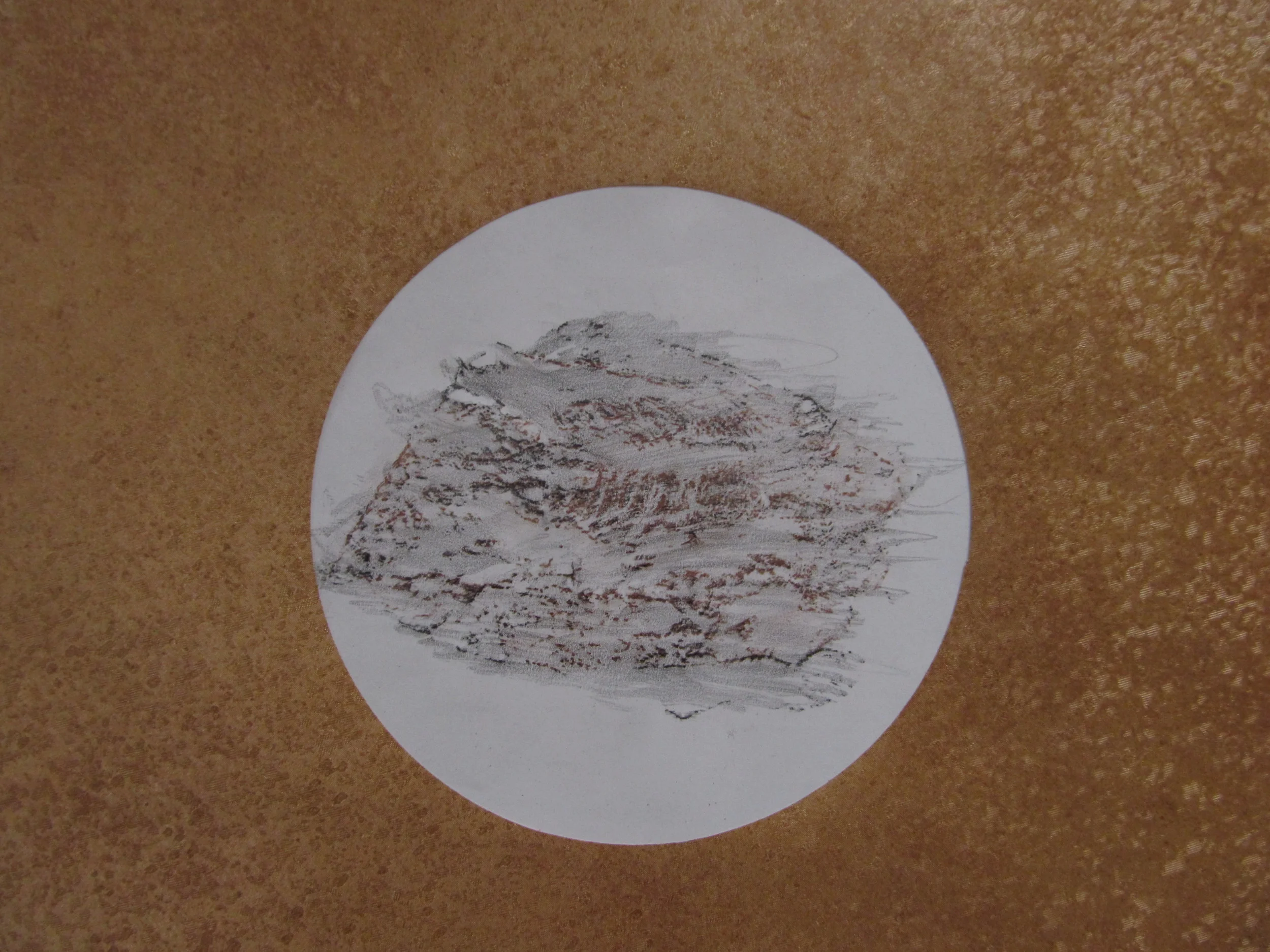
"Landscape's most critical condition is considered to be space, but its deepest theme is time" Rebecca Solnit
Inspired by brassrubbing, a favourite childhood activity, Argraffnodau are frottage works of graphite, Candelilla wax and oil pastel. The Argraffnodau are made through hours of physical engagement with ancient rocky outcrops, on trees or a combination of both. They juxtapose the timescales of different activities and lifespans with geological time, combining different ways of knowing - a kind of situated knowledge. The results look like maps, microcosms of the place, with uncertain geographical and temporal scales.
Darnau ffrotais yn defnyddio graffit, cwyr Candelilla a phastel olew yw’r Argraffnodau. Lluniwyd yr Argraffnodau ar frigiadau creigiog hynafol, ar goed neu ar gyfuniad o’r ddau. Maent yn gwrthgyferbynnu graddfeydd amser gwahanol weithgareddau ac oesau, gydag amser daearegol. Ymhob achos, edrycha’r canlyniad fel map, microcosm o’r lleoliad, gyda graddfeydd daearyddol a thymhorol sy’n ansicr.
This series includes work created in a six month collaboration with Artistiaid Cudd (Hidden Artists) and Bangor University Natural History Museum. These were exhibited as part of Bangor Science Week, March 2013.
As well as the finished Argraffnodau, photos of the works are taken in situ, on completion. Available framed or unframed.
"Landscape's most critical condition is considered to be space, but its deepest theme is time" Rebecca Solnit
Inspired by brassrubbing, a favourite childhood activity, Argraffnodau are frottage works of graphite, Candelilla wax and oil pastel. The Argraffnodau are made through hours of physical engagement with ancient rocky outcrops, on trees or a combination of both. They juxtapose the timescales of different activities and lifespans with geological time, combining different ways of knowing - a kind of situated knowledge. The results look like maps, microcosms of the place, with uncertain geographical and temporal scales.
Darnau ffrotais yn defnyddio graffit, cwyr Candelilla a phastel olew yw’r Argraffnodau. Lluniwyd yr Argraffnodau ar frigiadau creigiog hynafol, ar goed neu ar gyfuniad o’r ddau. Maent yn gwrthgyferbynnu graddfeydd amser gwahanol weithgareddau ac oesau, gydag amser daearegol. Ymhob achos, edrycha’r canlyniad fel map, microcosm o’r lleoliad, gyda graddfeydd daearyddol a thymhorol sy’n ansicr.
This series includes work created in a six month collaboration with Artistiaid Cudd (Hidden Artists) and Bangor University Natural History Museum. These were exhibited as part of Bangor Science Week, March 2013.
As well as the finished Argraffnodau, photos of the works are taken in situ, on completion. Available framed or unframed.
Argraff 1: Breuddwydion y Mynydd
Graphite on cotton (single bed sheet), 2012
240 x 160 cm
The Rock: Braich Tu Du Volcanic Formation - Basaltic Tuff And Basaltic Lava. Igneous Bedrock formed approximately 449 to 458 million years ago in the Ordovician Period. These rocks were formed from semi-mobile to mobile and highly gaseous silica-poor magma. It rose to the surface, where sudden pressure relief caused explosive volcanic eruptions, producing fragmentary pyroclastic material or ash. (British Geological Survey)
Argraff 6: Pob Caledi
Graphite, carnuba wax and oil pastel on cotton (double duvet cover), 2013
228 x 200 cm
The Rock: Craig Yr Undeb (Union Rock), the secret site of quarrymen's meetings leading to the establishment of the Union in 1874. Each meeting began and ended with singing:
“Yn wyneb pob caledi, y sydd neu eto ddaw, dod gadarn gymorth imi i lechu yn dy law” Anne Griffiths
“In the face of every hardship existing or yet to come, give me the strength to shelter in your hand
Padarn Tuff Formation - Felsic Tuff
. Igneous Bedrock formed approximately 545 to 650 million years ago in the Neoproterozoic Iii Period. These rocks were formed from viscous and highly gaseous silica-rich magma. It rose to the surface, where sudden pressure relief caused explosive volcanic eruptions, producing fragmentary pyroclastic material or ash. (British Geological Survey)
The Rock
Breuddwydion y Mynydd (iii)
Photographic print, 20 cm x 25 cm
2012
Breuddwydion y Mynydd (i)
Photographic print, 20 cm x 25 cm
2012
Forked Path (i)
Photographic print, 25 cm x 20 cm
2012
Argraff 3: Forked Path
Graphite, hail and candelilla wax on cotton (sheet bag), 2012
170 x 70 cm
The Rock: Bedded Pyroclastic Formation - Pyroclastic-Rock. Igneous Bedrock formed approximately 449 to 458 million years ago in the Ordovician Period. These rocks were formed from viscous and highly gaseous magma. It rose to the surface, where sudden pressure relief caused explosive volcanic eruptions, producing fragmentary pyroclastic material or ash. (British Geological Survey)
Hanes o Fynyddoed (i)
Photographic print, 25 x 20 cm
2012
Argraff 2: Hanes o Fynyddoedd
Ironstone staining, graphite and oil pastel on cotton (double duvet cover), 2012
226 cm x 170 cm
The Rock: Bedded Pyroclastic Formation - Pyroclastic-Rock. Igneous Bedrock formed approximately 449 to 458 million years ago in the Ordovician Period. These rocks were formed from viscous and highly gaseous magma. It rose to the surface, where sudden pressure relief caused explosive volcanic eruptions, producing fragmentary pyroclastic material or ash. (British Geological Survey)
Rhaeadru (Cascade) (ii)
Photographic print, 25 cm x 20 cm
2012
Argraff 4: Rheadru (cascade)
Graphite and oil pastel on cotton pillow cover, 2012
60 x 60 cm
Rock: Pitts Head Tuff Formation - Felsic Tuff. Igneous Bedrock formed approximately 449 to 458 million years ago in the Ordovician Period. These rocks were formed from viscous and highly gaseous silica-rich magma. It rose to the surface, where sudden pressure relief caused explosive volcanic eruptions, producing fragmentary pyroclastic material or ash.
Dibyniaeth (i)
Photographic print, 20 cm x 30 cm
2013
Argraff 5: Dibyniaeth
Graphite, candelilla wax and oil pastel on cotton (double duvet cover), 2012
200 x230cm
Ash Tree growing over Braich Tu Du Volcanic Formation Siltstone. Sedimentary Bedrock formed approximately 449 to 458 million years ago in the Ordovician Period. These rocks were formed in shallow seas with mainly siliciclastic sediments (comprising of fragments or clasts of silicate minerals) deposited as mud, silt, sand and gravel. (British Geological Survey)
Pob Caledu (iii)
Photographic print, 25 cm x 20 cm
2013
Tarian Am Gog (Shield for a Cuckoo) (i)
Photographic print
2013
25 x 20 cm
Argraffau Dobbie (Detail)
Series of details from four banners made for the Natural History Museum, Bangor.
2013
Banners include:
- samples from Dr . James Dobbie ’s rocks and minerals collection
- postage stamps, photographs
- extracts from “Moses and Geology – The Harmony of the Bible With Science ” by Samuel Kinn (1882)
Dobbie was the founder of the museum and the first head of Chemistry and Geology at Bangor University (1884), and a signatory to Kinn's petition.
3000 quarrymen supported the founding of the university through subscriptions from their wages and walked to the opening of Bangor University at the Penrhyn Arms in October 1884.